Quality seals and certificates
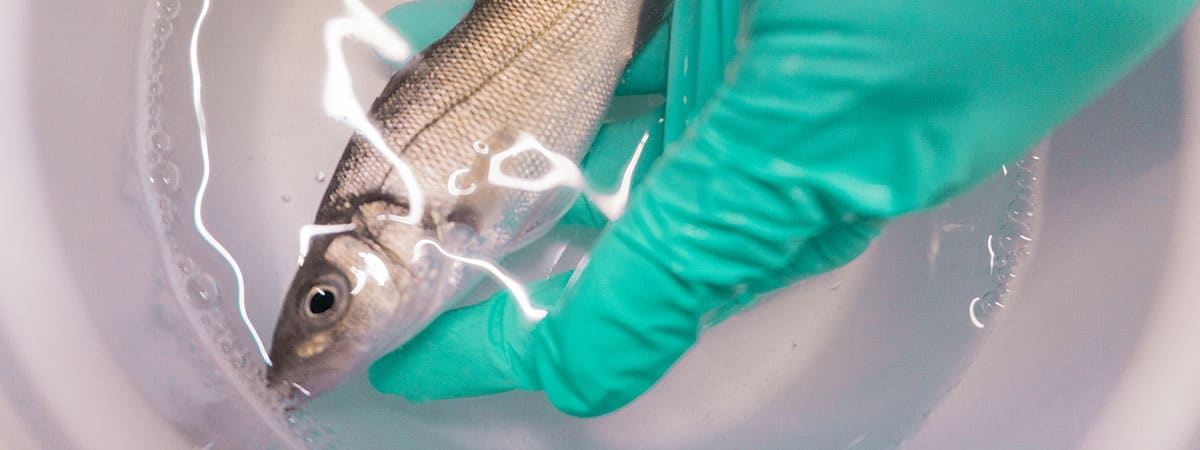
In order to make the right choices from the wide range of products offered by various manufacturers and brands when shopping for food, many consumers use seals and certificates as a guide. These were originally created to associate products with certain characteristics and to provide consumers with a basis for making decisions. The seals of approval can be classified according to environmental or social aspects as well as according to the product groups to which they refer.
In Germany there are now over 1000 different quality seals, marks of origin and symbols. Accordingly, food packaging is correspondingly colorful. Only very few of the seals are based on legal foundations. A large number of the symbols are private labels or private test marks. For the consumer, this seal and certification landscape is primarily confusing. Many labels and their lack of transparency make it difficult to choose suitable foods and identify their origin based on one’s own values.
With regard to aquaculture, there is also a great need for information, as various recent studies have shown, including the study of the BÖLN (Bundesprogramm Ökologischer Landbau und andere Formen nachhaltiger Landwirtschaft) „Kreislaufanlagen – Positionen des Ökosektors” (Recirculation systems – Positions of the eco-sector). Although fish farming has been integrated into the EU organic regulation since 2009, modern recirculation systems are currently excluded from the regulation. The „near-natural“ farming methods mentioned above are not compatible with recirculation systems that place the fish in plastic tanks.
“(11) Recent technical development has led to increasing use of closed recirculation systems for aquaculture production, such systems depend on external input and high energy but permit reduction of waste discharges and prevention of escapes. Due to the principle that organic production should be as close as possible to nature the use of such systems should not be allowed for organic production until further knowledge is available. Exceptional use should be possible only for the specific production situation of hatcheries and nurseries.”
(Commission Regulation (EC) No 710/2009 of 5 August 2009)
The concept of being close to nature and the question of which new researches are necessary were taken up and controversially discussed in Naturland’s stakeholder study. It can be said that every aquaculture is artificial in itself, but the recirculation system makes it „far from nature“, especially stated by the consumer. This consumer often transfers his knowledge and perceptions of livestock and poultry farming (factory farming) to fish farming and thus judges it mainly emotionally and unobjectively. Compared to other fish farming practices, however, closed recirculation systems have numerous advantages in terms of the environment:
- conservation of stocks in natural waters
- no discharge of excrements and residues into natural waters
- reduction of water consumption
- reduction of transport distances
- control of the fish stock, no escape to surrounding ecosystems
- food safety
In order to guarantee a qualitative characterization of fish farms in the future and to legitimize the eco-certification procedures for recirculation systems, the definition of the EC Eco Regulation must be divided into concrete evaluation points. Criteria such as „close to nature“ and „animal-friendly livestock farming“ must be specified in their requirements so that each plant can be evaluated individually.
Even though there is currently no certification possibility for closed recirculating aquaculture, the following is a brief introduction to the most important labels:
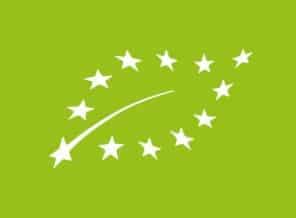
EU Bio-Label
This label can be found on products in which at least 95% of the ingredients come from organic farming and which contain a maximum of 0.9% genetically modified materials. Since 2010, there is an individual section of organic aquaculture, in which it is regulated that the stocking density may not exceed 25 kg per m3 (varies according to species). In closed recirculation systems only brood and young animals may be kept. Only organically produced feed is allowed as feed and for carnivorous fish certain vegetable ingredients are only restrictedly approved.
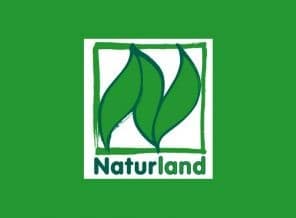
Naturland
Since the mid-1990s, the Naturland Association for Organic Farming, founded in 1982, has also had guidelines for aquaculture. Only feedstuffs that meet these standards may be used. In addition, the stocking density must not exceed 10 kg per m3 (varies according to the species of fish). Furthermore, no chemicals may be used, and the animals may not be reared in artificial containers. Therefore, this label categorically excludes the farming in closed recirculation systems.
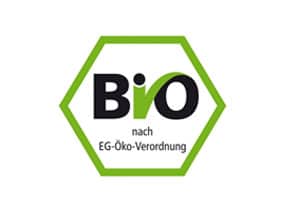
German Bio-Label
The German equivalent of the EU eco-label is also based on EU legislation and is therefore usually found beside the EU label on the product packaging. It is aimed thereby likewise at a „kind-fair animal husbandry“ and a careful, lasting and thus ecological production.
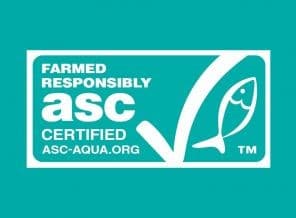
ASC
Following on from the MSC label for wild caught fish products, the ASC seal for responsible aquaculture has been in existence since 2009. The standard criteria are the traceability of the origin of the fish feed (not from overfished stocks, GMO declared), the ban on genetically modified animals, suitability of the location for the farmed fish, low mortality rate during the breeding period, guarantee of a good water quality and medically monitored use of antibiotics exclusively for the treatment of sick animals.
In the meantime, documentations of the activities and certification procedures of MSC and ASC are available. With regard to these reports the question arises whether the products certified with these labels are actually still produced according to the specified criteria and whether one should trust in the label.
Other seals are for example those of Transparent Fisheries, bioFish, Sustainable Aquaculture, Debio, GGN and Gää.
In summary, it can be said that consumers today not only blindly trust printed labels but should also form their own impression of products and their origin – especially in the fresh food sector. In the course of an increasingly regional supply the consumer is enabled to maintain contact with the producer and to convince himself of the production conditions of the food in personal talks at the market or at the producer’s premises. In this way, the consumer knows what ends on his plate and the producer ultimately experiences more understanding and greater appreciation of his product.
With this in mind, we will be dispensing with labels for the foreseeable future and would prefer to encourage consumers to find out about the origin of the fish of their choice and to support those suppliers who best meet their values of freshness, sustainability and quality.
References:
- Korn, A.; Feucht, Y.; Zander, K.; Janssen, M.; Hamm, U.: „Entwicklung einer Kommunikationsstrategie für nachhaltige Aquakulturprodukte.“ Bundesprogramm Ökologischer Landbau und andere Formen nachhaltiger Landwirtschaft (BÖLN), Witzenhausen, 2014.
- https://aquaculture.ggn.org/de/anforderungen-und-standards.html, 18. March2019.
- https://www.oekolandbau.de/erzeuger/tierhaltung/spezielle-tierhaltung/fische/bioaquakultur-in-deutschland/, 19. March 2019.
- https://www.naturland.de/de/naturland/was-wir-tun/fisch/oekologische-aquakultur.html, 19. March 2019.
- Bergleiter, S. et al.: „Kreislaufanlagen – Positionen des Ökosektors.“ Bundesprogramm Ökologischer Landbau und andere Formen nachhaltiger Landwirtschaft (BÖLN), Stakeholder-Studie durchgeführt von Naturland – Verband für ökologischen Landbau e.V., 2018
- https://www.in-form.de/wissen/guetesiegel-und-was-dahinter-steckt/, 11. June 2019
Picture Source: SEAWATER Cubes